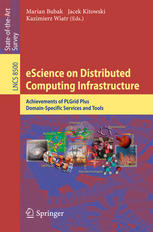

Most ebook files are in PDF format, so you can easily read them using various software such as Foxit Reader or directly on the Google Chrome browser.
Some ebook files are released by publishers in other formats such as .awz, .mobi, .epub, .fb2, etc. You may need to install specific software to read these formats on mobile/PC, such as Calibre.
Please read the tutorial at this link: https://ebookbell.com/faq
We offer FREE conversion to the popular formats you request; however, this may take some time. Therefore, right after payment, please email us, and we will try to provide the service as quickly as possible.
For some exceptional file formats or broken links (if any), please refrain from opening any disputes. Instead, email us first, and we will try to assist within a maximum of 6 hours.
EbookBell Team

4.8
74 reviewsTo help researchers from different areas of science understand and unlock the potential of the Polish Grid Infrastructure and to define their requirements and expectations, the following 13 pilot communities have been organized and involved in the PLGrid Plus project: Acoustics, AstroGrid-PL, Bioinformatics, Ecology, Energy Sector, Health Sciences, HEPGrid, Life Science, Materials, Metallurgy, Nanotechnologies, Quantum Chemistry and Molecular Physics, and SynchroGrid. The book describes the experience and scientific results achieved by the project partners. Chapters 1 to 8 provide a general overview of research and development activities in the framework of the project with emphasis on services for different scientific areas and an update on the status of the PL-Grid infrastructure, describing new developments in security and middleware. Chapters 9 to 13 discuss new environments and services which may be applied by all scientific communities. Chapters 14 to 36 present how the PLGrid Plus environments, tools and services are used in advanced domain specific computer simulations; these chapters present computational models, new algorithms, and ways in which they are implemented. The book also provides a glossary of terms and concepts. This book may serve as a resource for researchers, developers and system administrators working on efficient exploitation of available e-infrastructures, promoting collaboration and exchange of ideas in the process of constructing a common European e-infrastructure.